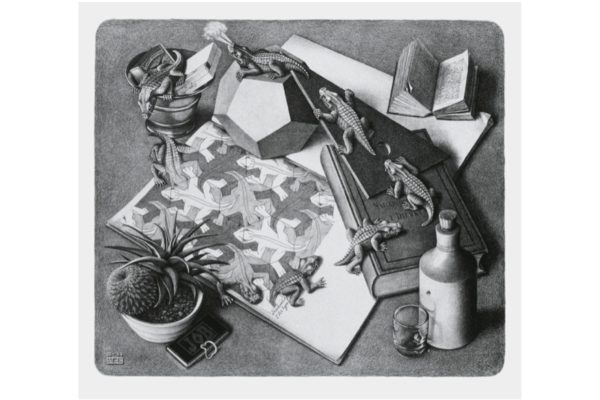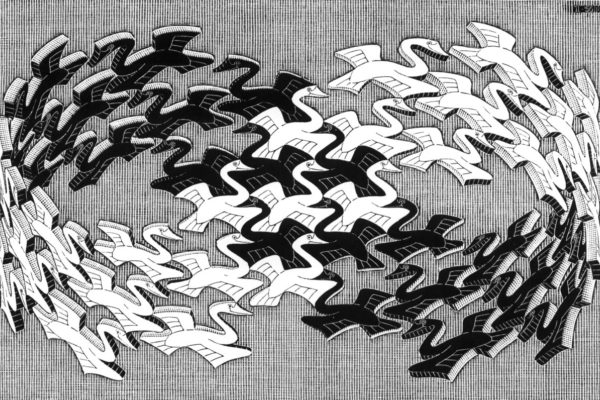
In the second of four posts on self management, we looked at Holacracy as an attempt to solve for a fully-specified structural framework for self-management. Holacracy is thoughtfully designed and elegant. However, most companies interested in unleashing energy by flattening their structures don’t need the air-tight system the Holacracy constitution provides. They need to be able to both set and deliver on strategy at the enterprise level beyond what Holacracy allows for, and they can’t afford the level of process complexity Holacracy requires.
We’ve recently seen a number of companies publicly grapple with the challenges of a radically unstructured model. A recent post from Leo Widrich, the founder of Buffer, on lessons learned from their eleven months of self management highlights some of the challenges faced by organizations that rip out structure and hierarchy. Employees felt lost without enterprise-level vision and goal setting: “The amount of freedom people had, with absolutely no guidance, expectations or accountability, was pretty overwhelming.”
Widrich realized that Buffer couldn’t shy away from the need for higher-level work on their organization, and that the strengths and comparative advantages that different members of the organization brought to the table created a natural hierarchy that should be appreciated and used, not arbitrarily “flattened”. Widrich reflects: “The more self-managed you are as a company, the more structure you need. You really need to make things explicit and create clear commitments for what you’re working on… Outlining things as explicitly as possible is absolutely crucial.”
At Incandescent, we’ve been reflecting on what an alternative baseline architecture for self management could look like, one that appropriates the most significant advantages of more traditional managerial hierarchies – strategic coherence and a clear flow of accountabilities – while unlocking the potential that many leaders see in moving away from hierarchical management and toward self management.. To us, the “nut” of self management – the common ground across what many founders and thought leaders are reaching for – is being able to work toward a shared purpose with others, in a way that gives one freedom to make decisions about one’s own work and a voice in discussions that matter.
We believe a baseline architecture for self management should bring together two fundamental principles:
- Strategic coherence: the ability to commit to objectives at the enterprise level and align behind a set of core concepts that shape how those objectives will be achieved, AND
- Autonomous execution: people at all levels are able to shape their own path to the specific objectives they own.
What does this mean in practice?
A hierarchical flow of objectives – smaller sub-objectives flowing from larger super-objectives – that are achieved without hierarchical direction of work.
At the core of this baseline approach is the distinction between what we call the sponsor role and the owner role.
The sponsor is the person or group who holds a high-level objective and can choose to delegate part or all of that objective to an owner. The sponsor continues to have accountability for the objectives they delegate, even as they create ownership of accountabilities further down in the organization.
Having been given an objective by the sponsor, the owner is responsible for charting the path to achieve the goal. Owners will usually be individuals, who might lead a team or bring together a range of people in different ways to achieve the committed outcome. Occasionally, co-owners or a team can be given ownership of a certain responsibility or assignment. In this case, every member of the team is “individually and severally” accountable. More frequently, however, the leader of a team is placed in the owner role, and he or she in turn delegates work to other members of the team and engages them in collective problem solving.
For an objective to flow from a sponsor to an owner, there must be a “meeting of the minds” regarding the objectives and responsibilities for which the owner assumes accountability. This meeting of the minds, which we could term “alignment on the brief,” must include:
- What outcomes must be achieved, by when, and how it will be evaluated
- Who owns driving the outcome
- Subject to what constraints (e.g., budget, approval/review process, integration with other work, policy constraints, and so on)
A brief could be written down or simply informally understood. What is essential is that the “meeting of the minds” occurs and that it is sustained over time. If the sponsor’s and owner’s understanding of the brief comes apart, that puts the organization at risk: how can the sponsor rely on the owner to achieve the objective if they aren’t aligned on what precisely the objective is, when it must be achieved, or what relevant constraints the owner must operate within?
Within the constraints the sponsor and the owner have agreed upon, it is wholly the owner’s job to shape the path to the goal. The sponsor has important work to do — monitoring and probing to understand how the work is unfolding, anticipating the road ahead, synthesizing whether there is reason for confidence the goal will be achieved – but all this work is in service of making the fundamental decision of whether she has the right design in place, not for directing the owner what to do or how to do it. The sponsor can change out the owner, can change the brief (requiring a renewed meeting of the minds), can offer her perspectives and advice – but she shouldn’t direct. As soon as the sponsor steps into directing, she moves from delegating ownership to owning the outcome herself and simply delegating support.
Returning to our four propositions laid out in the first of this series of posts, this baseline approach:
- Does establish autonomy of execution (proposition one), within constraints agreed upon between sponsor and owner
- May or may not give the sponsor “people management” responsibilities (proposition two) with regard to the owner
- Does not provide autonomy of role selection (proposition three) – but the meeting of the minds on the brief ensures objectives flow from sponsor to owner with true mutual agreement
- Does not diminish the board’s, CEO’s and/or leadership team’s responsibility to commit to enterprise-level objectives and strategies (proposition four), and to translate these into a cascading design for how the objectives will be achieved and how strategies will be acted upon
In a model like this, self management in the sense of shaping one’s own path to the goal is likely to be prevalent but not universal. Some people’s work is likely not to be ownership of their own distinct goal but rather providing leverage to help an owner achieve his or her goal. In this baseline view, self management is a practical choice, not an ethical imperative. Where it makes practical sense to have an individual’s work directed by someone else – e.g., providing leverage to a goal owner – that’s an available choice, although always with the principle that management should adhere to the minimum level of specification of the path required to achieve the goal, simply as a matter of efficiency and elegance.
Beyond these basic architectural building blocks of sponsor, owner and brief, this baseline approach to self management should embed five principles into the fabric of how the organization works:
1. Each role is a window into the broader enterprise. Pursuing any goal relevant to the enterprise yields not only the progress that results from achieving the goal but the potential for insight into how the broader enterprise works – and where it doesn’t work as it could. Each individual is every role is responsible for using their role as a window through which to reach insights on the broader whole and to give voice to those insights.
2. Each member has a voice. Any individual, in any role, has the right and responsibility to raise issues and questions laterally or upwards based on what they see through the window of their role. These inputs should be heard and understood. Those who own particular responsibilities have no obligation to act on these ideas; but they do have the imperative to understand, reflect upon and evaluate whether action is required.
3. Decision rights do not confer the capability to decide well. People generally own a decision for positional reasons: they are in charge of a given area or objective. That might or might not equate to having the knowledge, expertise or judgment to make a particular decision well. One should ask the question: “am I best positioned to make this decision?” There are three basic answers to this question:
- Yes, as an expert. I have sufficient expertise and ability to judge that I can gather the relevant evidence, interpret it and decide.
- Yes, as a synthesizer. I don’t have the expertise needed to make this decision myself, but I am best positioned to weigh the perspectives of experts and make a judgment about what’s the best decision all things considered.
- I’m not the best positioned to weigh and synthesize, so even though I have the authority to make the decision, I need to create a better construct for the decision to get made. My role is to get the decision made in the right way, rather than to make the right decision.
Clarity about which of these applies, and why, makes a tremendous difference to decision quality. For instance, making a decision as a synthesizer implies a very different kind of conversation leading up to the decision point than making a decision as an expert.
4. All work is in service of firm-wide goals. “Accountability for” is the source of “accountability to”. Objectives flow from a sponsor to an owner because the sponsor is accountable for the work he or she delegates. The owner’s “accountability to” the sponsor reflects the deeper relationship of the sponsor continuing to be “accountable for” the owner’s work. Owners don’t therefore “work for” sponsors so much as they “work in service of” a sponsor’s goals, as a way of advancing the broader organization’s goals.
5. A distinct discipline for managing structural tensions. Organizations are made up of objectives and a living, evolving set of mechanisms for achieving them. One part of management relates to carving up objectives into workable chunks and consistently delivering upon them. This part of management can readily be fulfilled through the architecture of sponsor, owner and meeting of the minds.
Another, far more difficult, part of management relates to integrating objectives that pull in distinct directions, in order to achieve some whole that is larger than its component parts. We at Incandescent see this distinction as sufficiently fundamental that we call these two disciplines management-1 (the division of objectives into workable parts) and management-2 (the orchestral integration of disparate objectives).
Where owners can simply be unleashed to self-manage work that fits the model of management-1, the structural tensions of management-2 require leaders who own higher-level goals to stand behind striking the proper balance between the lower-level goals owned by different individuals. These leaders may or may not have to step actively into the role of making any given operating decision – often conflicts can simply be worked out at the level at which they occur – but they must be accountable for ensuring, through whatever mechanism, that the best achievable balance or integration of these conflicting goals is reached in the system over time.
In contrast to Holacracy, where process is paramount, these five principles represent disciplines, not processes. Of course these disciplines may have process implications, but they could be realized in a wide range of processes, or without any formal process at all.
There’s nothing particularly radical about the design for self management embodied in the architecture of sponsor, owner and brief and these five principles for how an organization operates. The resulting structure isn’t flat. It implies a nesting of objectives, with smaller objectives living inside of larger ones. It creates a hierarchy of decision-making, although it reserves for the owner the right and the responsibility to shape the path to deliver on her brief within the constraints specified, without those above her in the hierarchy prescribing how. What this design delivers, which Holacracy and radically unstructured models do not, is the ability to combine strategic coherence with the unleashing of effort and energy that comes from self management at its best.



